 |
 |
 |
| |
Physical Functioning in Older Adults with HIV -
80% Impaired Physical Function in Baltimore Clinic
SPBB & IADL Measured
|
| |
| |
Aging Workshop Oct 14-15
Reported by Jules Levin
Kareshma Mohanty 1, Nicole Viviano1, Jennifer D Hoffmann2 , Shreenidhi Sharma1, Judith Lee2, Uzoamake Eke 2,3, Neha S Pandit 4, Robyn Palmeiro 2, Kristen Stafford 1,2, Ann Gruber-Baldini 1, Sarah A Schmalzle 2,3
1 Department of Epidemiology & Public Health, University of Maryland School of Medicine, Baltimore MD, United States
2 Institute of Human Virology, University of Maryland School of Medicine, Baltimore MD, United States
3 Department of Medicine, Division of Infectious Disease, University of Maryland School of Medicine, Baltimore MD, United States 4 Department of Pharmacy Practice and Science, University of Maryland School of Pharmacy, Baltimore MD, United States

Results: This study sample of 184 participants was predominantly male (56%), single (62%), virally suppressed (94; VL<200), smokers (84.8%), and identified as Black (94%). On average, participants were 60 years of age and had been living with HIV for 24 years.
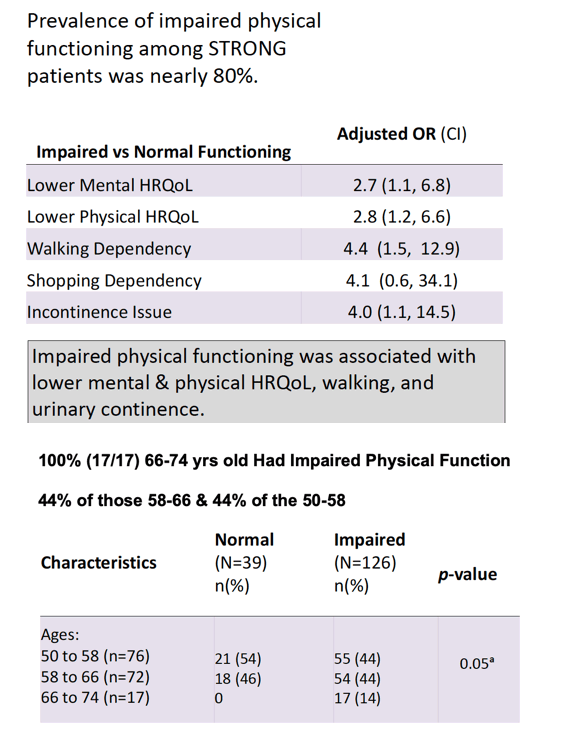
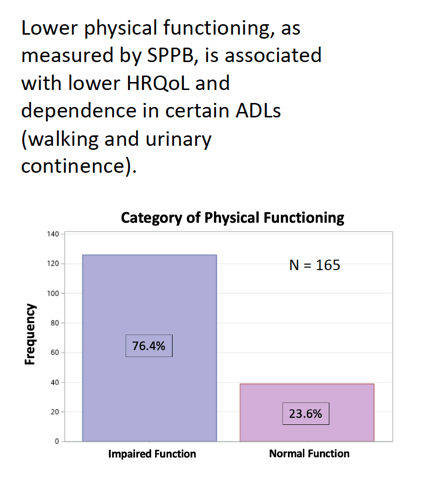
Concerns regarding daily functioning and mobility highlight the need to incorporate geriatric and multimorbidity principles in HIV care for oPLWH. PF measures, like Short Physical Performance Battery (SPPB), timed up and go (TUG), and gait speed (GS) can be strong predictors of mobility, disability, cardiovascular health, and mortality. Different measures of PF were explored in this study to understand the physical functioning in oPLWH, and its association with HRQoL and daily functioning.
Among the ADLs, lower odds of independent functioning regarding walking, performing household chores, and traveling long distances were observed (OR=0.73; 95%CI=0.63-0.86, OR=0.82; 95%CI=0.69-0.96, OR=0.81; 95%CI=0.68-0.97, respectively)
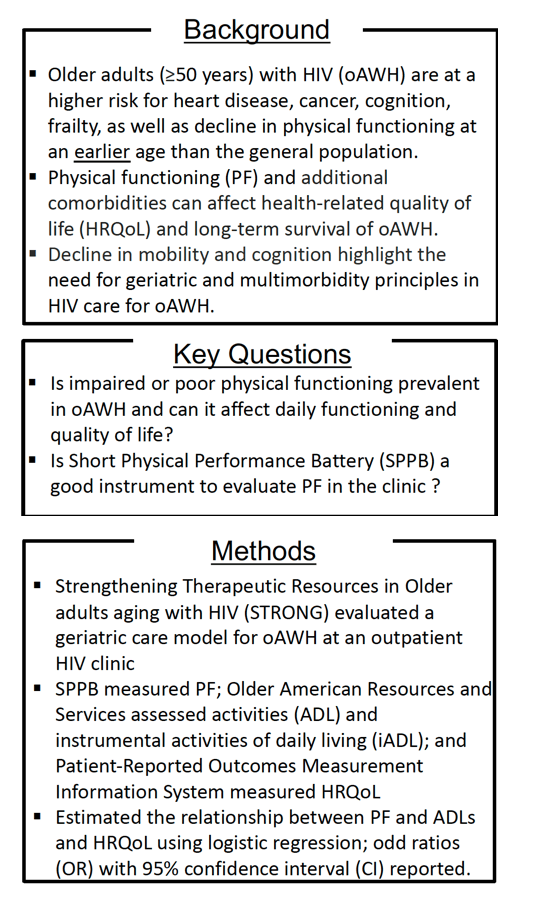

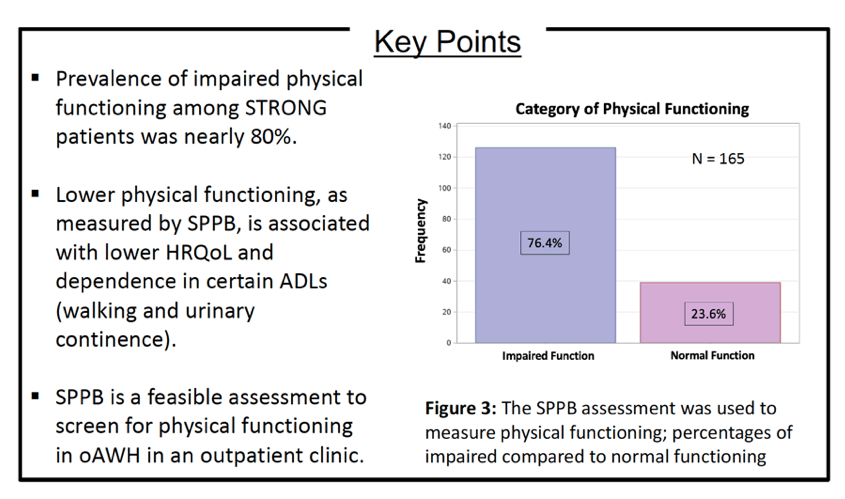
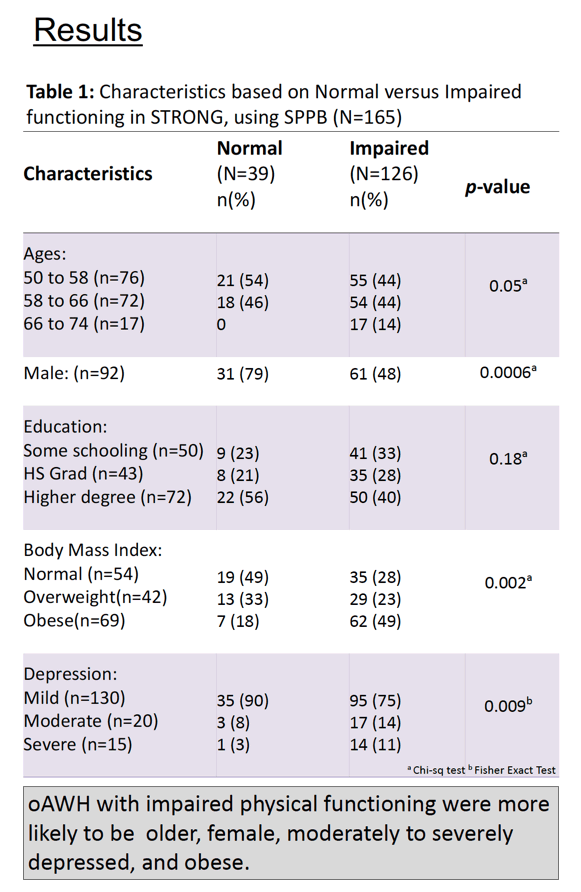

|
| |
|
 |
 |
|
|